Amazing Pollinators in the Garden
Amazing Pollinators in the Garden
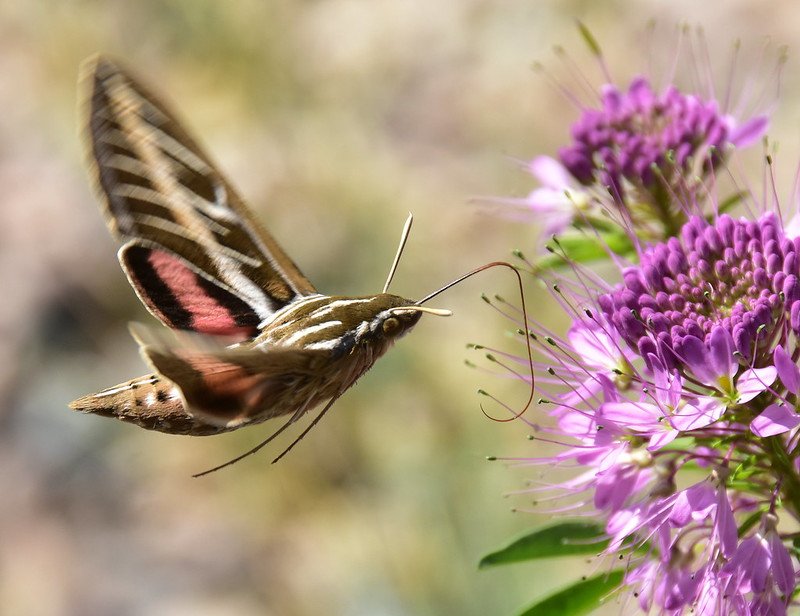
Hummingbird moths are great pollintors for your garden. Photo: USFWS
How many pollinators in the garden can you name? Well, of course, there are bees and butterflies, but what about hummingbird moths, lizards, wasps, ants and opossums? Wait, they all help pollinate your flowers? They do and wow, are they all misunderstood.
But let’s start at the very beginning. Just what is pollination?
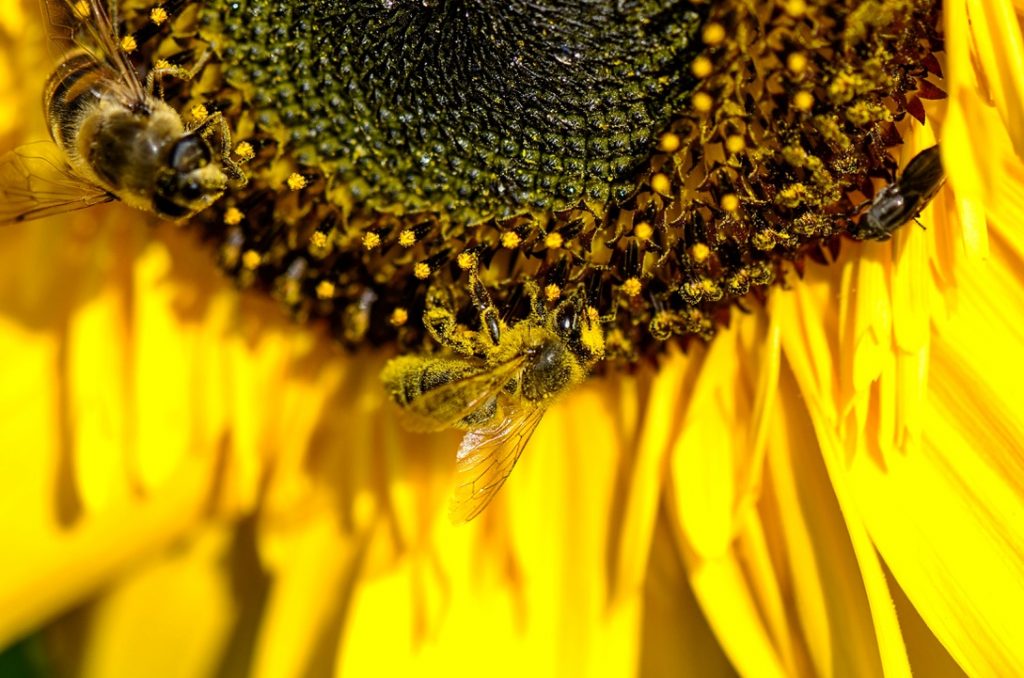
Look at all the pollen (the yellow powdery stuff) on the bee.
What is pollination?
So, what is pollination? You know the yellow powdery stuff you see on flowers? It’s pollen.
But what exactly is pollen? Without getting too technical, it is the yellow dusty looking substance that is produced by the male part of a plant. Hmm, I never knew that.
For many plants to reproduce and make seeds, they need pollen to be moved from the male parts of the plant to the female parts. When insects, other animals or even the wind move the pollen within the same flower or between flowers it fertilizes the plant allowing it to reproduce.
But how do the insects move the pollen around? Here is where it gets interesting.
What is a pollinator?

Ladybugs are great pollinators and they eat aphids.
Let’s use a bumblebee as an example of an insect pollinator. As the bee sips nectar or eats the pollen from a flower, the pollen grains stick to its body. While it moves about in the garden, the pollen transfers to new flowers which fertilize the plant.
And one cool thing is bees have specialized brushes on their legs to collect the pollen. This is really important for both the bee and the flower. Pollen has on average 27% protein which is the bee’s primary protein source. The plant needs to have its pollen moved around to reproduce. So it is a win/win for the flowers and the bees.
In addition to bee pollinators, there are other insect pollinators including wasps, beetles, butterflies, moths, ants and flies. Wow, that’s a lot. And to learn more about butterflies, read our “Butterflies” blog.
And one of our favorites? The ladybug. Not only do they help pollinate flowers, but they also eat aphids and mites which you don’t want in your garden. Plus they are so cute. Another win.
Which other animals are pollinators?
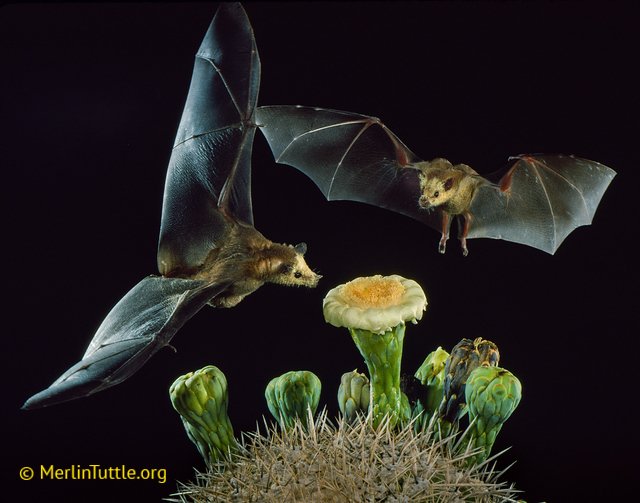
Two lesser long-nosed bats pollinating a saguaro cactus. Photo: Merlin Tutttle
It might surprise you (it did us) there are many animal pollinators in addition to insects. Lizards spread pollen as they move about among your plants.
And what about birds? Hummingbirds are the most famous bird pollinators but honeycreepers in Hawaii and several other bird species also help pollinate.
And then there are bats. They pollinate over 500 types of food including a couple of our favorites: mangoes and bananas.
Small mammals also aid in plant pollination by carrying the pollen on their fur when eating a plant. Opossums, mice, and squirrels are all pollinators in the garden.
Both bats and opossums are 2 of the coolest, most misunderstood animals on the planet. To learn more read our “Bats” blog and our “Opossums” blog
Why is pollination so important?
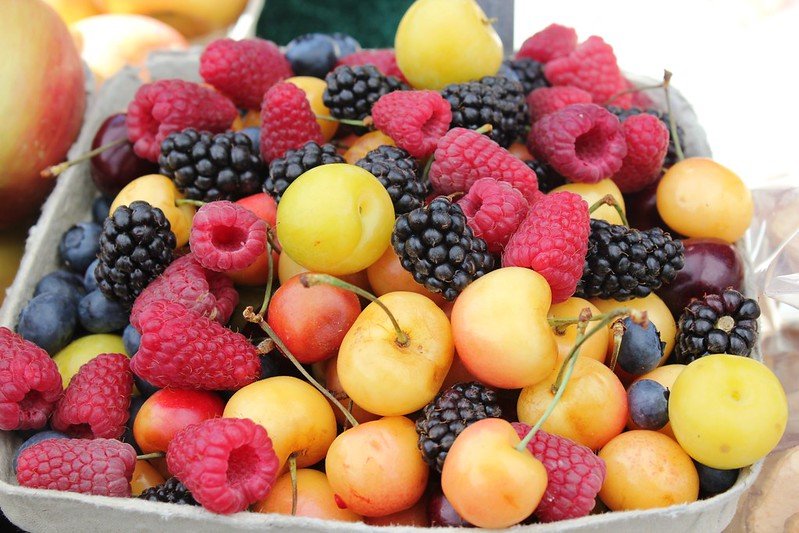
Many plants need pollinators in order to produce fruit and vegetables. Photo: Marcia O’Connor/Flicker
Why is this important you might ask? Well, the majority of our food supply (most fruit, nuts and vegetables) depend on pollinators.
If the plants don’t get fertilized, they can’t produce the food we eat. Hmm, that’s pretty important. Think of a world without squash, avocados, almonds, apples and hundreds more. It would be dreary and unhealthy.
How can you help pollinators in the garden?
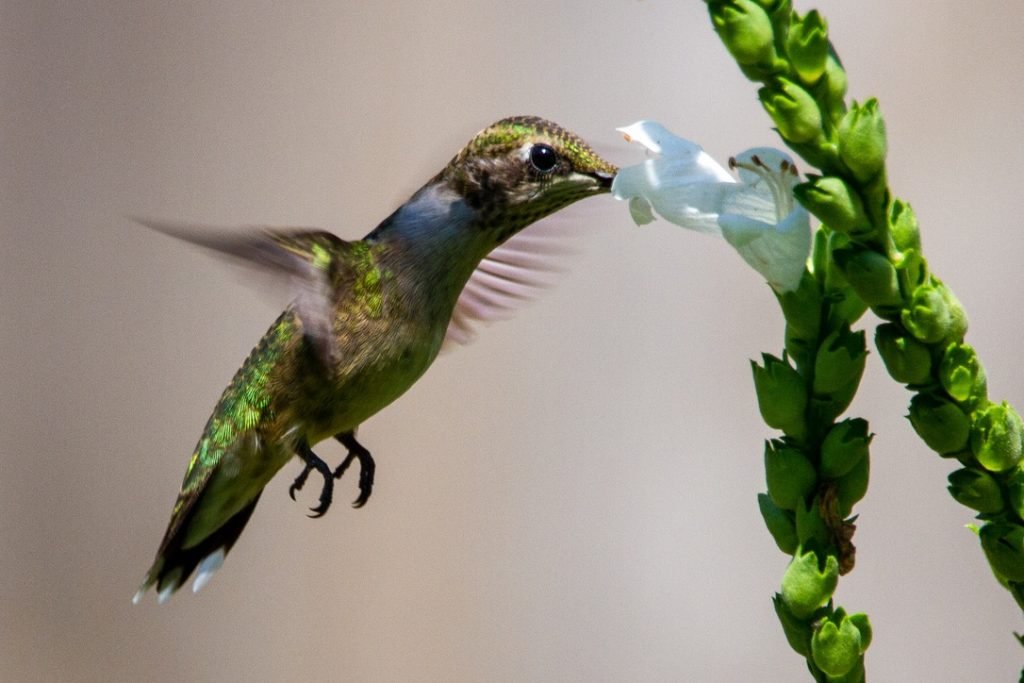
The ruby-throated hummingbird. is a great pollinator Photo: Joshua J Cotten/Flicker
Pollinators are in trouble. Big trouble. Have you noticed fewer and fewer insects seem to be in your garden each year. We have seen a significant drop-off of bees and butterflies in particular.
So what can you do to help pollinators? Here are a few suggestions:
- Limit or eliminate the use of pesticides. Guess what? They are meant to kill bugs, meaning your pollinators.
- Provide water sources for your insects. Fountains, butterfly puddling trays and birdbaths all help.
- Don’t clean up your garden until spring. Many native bees and caterpillars nest in the dead flower stalks and leaves on the ground during the winter.
- Plant native plants when possible. Butterflies need certain native plants on which to lay their eggs. If they don’t find the right plant, they won’t lay eggs and reproduce.
- Try and have a variety of flowers that bloom throughout the season. Both the nectar from the flowers and pollen will feed your pollinators.
- Tell everyone you know why pollinators are so important.
And for more info, check out How to Protect Your Pollinators in Ten Easy Ways by Smithsonian Magazine.
